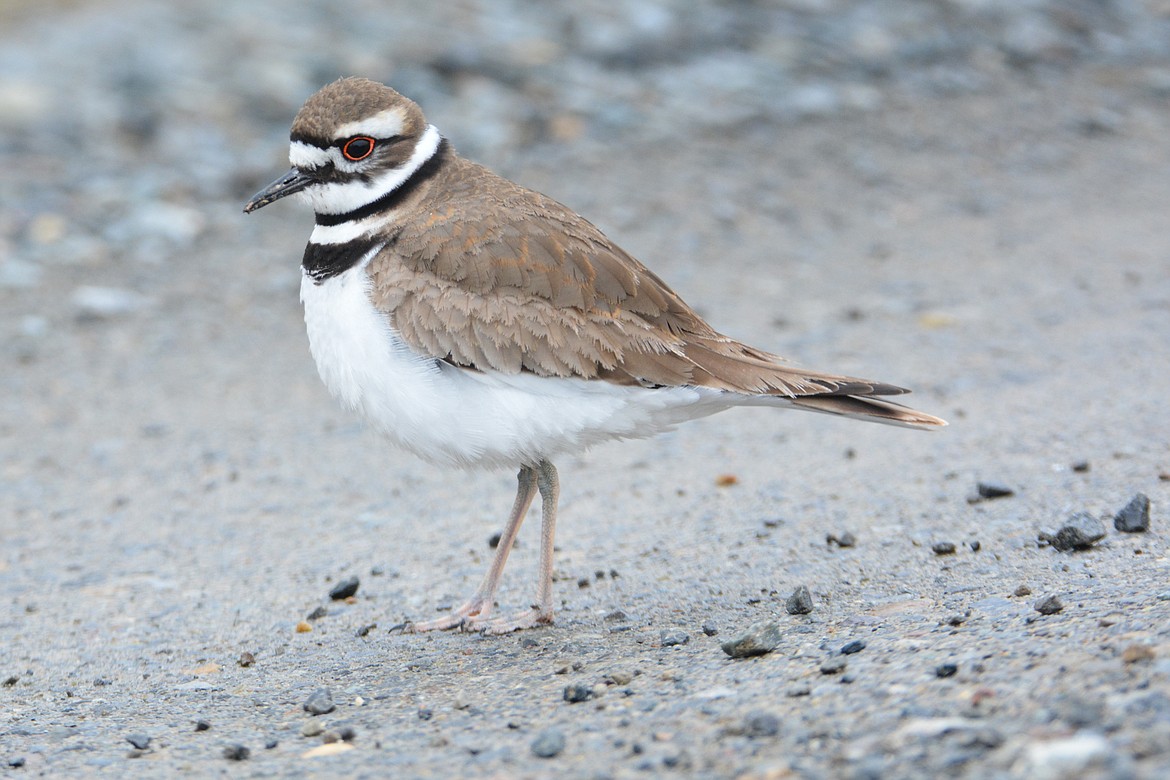Killdeer: a noisy bird that calls its name!
“The most interesting behavior of the killdeer is its polished performance of the broken-wing action — a device useful to many ground-nesting birds in luring enemies from the nesting area.”
— Douglas Deane, ornithologist
A shorebird you can see without going to the beach. You can hear them before you see them with a sharp, two-noted call repeating staccato-style in the air.
Killdeer are graceful plovers (plump-breasted birds of the shorebird family) common to lawns, golf courses, athletic fields, and parking lots. These tawny birds run across the ground in spurts, stopping with a jolt every so often to check their progress, or to see if they’ve startled up any insect prey. Their voice — a far-carrying, excited kill-deer — is a common sound even after dark, often given in flight as the bird circles overhead on slender wings.
The killdeer (Charadrius vociferous) is the largest of the ringed plovers, and the only plover in its range with a double breast band. Killdeers have brown upperparts, white underparts, and orange rumps. The eyes are dark with a bright red eye ring (see photo). In flight, the killdeer’s long, slender wings have conspicuous white wing stripes.
Killdeer get their name from the shrill, wailing kill-deer call they give so often. Because killdeer are so clamorous they are also known as the chattering plover and the noisy plover.
The broken-wing act used to lead predators from the nest would not keep a cow or horse from stepping on the eggs. To guard against large hoofed animals, the killdeer uses a quite different display, fluffing itself up, displaying its tail over its head, and running at the beast to attempt to make it change its path.
They require a sandy or gravelly spot for nesting near a wet or muddy area where they can forage. The male and female of a mated pair pick out a nesting site through a ritual known as a scrape ceremony. The male lowers his breast to the ground and scrapes a shallow depression with his feet. The female then approaches, head lowered, and takes his place. The male then stands with body tilted slightly forward, tail raised and spread, calling rapidly. Mating often follows.
Killdeer are common in open habitats such as field, meadows, gravel bars and mudflats throughout Idaho. Although well-known in dry habitats, the killdeer is actually a proficient swimmer. Adults swim well in swift-flowing water, and chicks can swim across small streams.
Adults and juveniles look the same year-round, but young, downy chicks have a single breast band. Both sexes have the same type of plumage, but the male is larger than the female. The killdeer is 8-11 inches high with a wingspan of 18-19 inches and weighs from 2.6 ounces to 4.5 ounces.
Killdeers feed mainly on ground invertebrates such as earthworms, beetles, grasshoppers, and snails. They occasionally eat seeds and small vertebrates.
The oldest recorded killdeer was at least 10 years, 11 months old.
Whenever possible, get outdoors and enjoy Boundary County!



